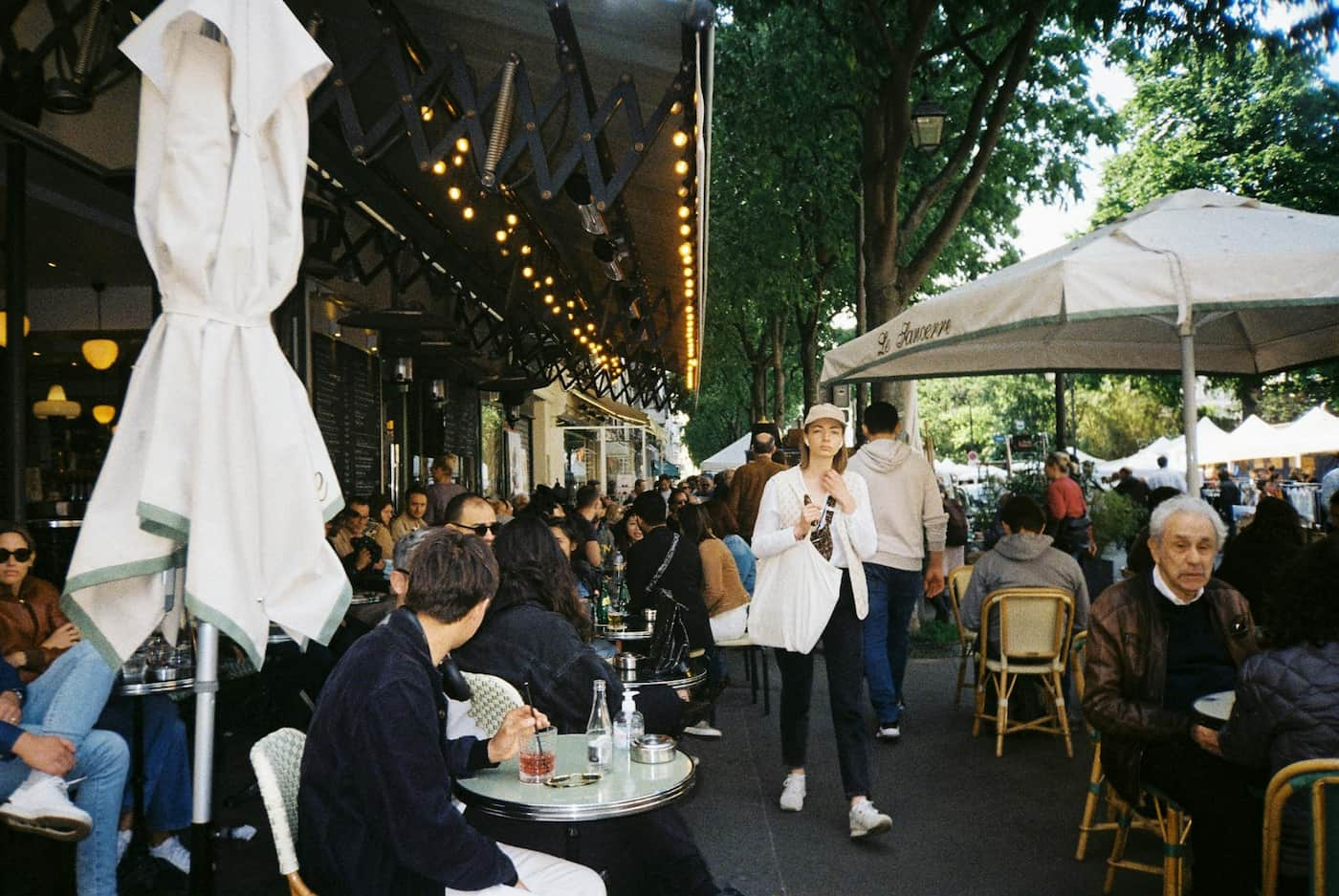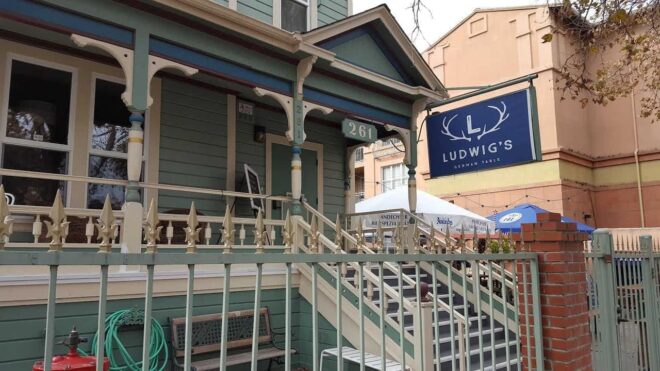How to improve table turnover at any type of restaurant
Editorial Team
6 min read
It’s your busiest service period, and customers are getting antsy. Your front-of-house staff struggles to appease guests ready to place their orders or waiting to be seated. Your back-of-house team works at warp speed, producing delicious food in high demand.
Why the hold-up? Quite possibly, your restaurant table turnover rate isn’t high enough. In a full-service restaurant, satisfied diners may linger over conversation and coffee. Or, your customers are waiting to receive their checks, so they can pay and leave. In each case, the table will need cleaning and set-up before the next party of guests can sit down.
Table turnover rate (TTR) refers to the time a party of guests spends sitting at their table in your establishment–whether it’s a quick-service restaurant, fine dining, or something in between. TTR is a crucial indicator of operational efficiency that can also impact profitability, since customer satisfaction–and even restaurant loyalty programs–can suffer if customers think your space is too crowded or service too slow.
Don’t worry. Clover has you covered. First, we’ll help you understand how TTR works and how to calculate it. Next, we’ll provide strategies and tools to help improve table turnover efficiency overall for full-service and quick-service restaurants.
Calculating your table turnover rate
You can easily calculate your restaurant’s TTR. Simply pick a popular service period and count the number of parties seated during that time. Divide by the number of tables in your restaurant. That number is your table turnover; or, roughly, the number of times each table was refreshed for a new set of diners during service.
Number of parties seated ÷ number of tables = table turnover rate (TTR)
For example, if you have 20 tables and seat 50 parties, divide 50 by 20. Your restaurant table turnover rate is 2.5. Most restaurants average a TTR of 3, but you’ll want to aim higher.
Parties seated ÷ tables = TTR
50 ÷ 20 = 2.5
Tips for accelerating restaurant table turnover
Any restaurant owner can use these basic strategies to help accelerate table turnover rates without diminishing restaurant loyalty or customer satisfaction. After all, no guest wants to feel they’ve been rushed into menu decisions or made to feel unwelcome after swallowing the last bite of their meal. These tips are pretty simple to implement, yet they can yield powerful results:
- Greet guests within a minute, whether they are being seated, using a restaurant QR code menu, or reaching the counter to place their orders.
- Train servers and runners to work as a team rather than limiting their ability to help guests with questions or requests.
- Ensure the food gets to their table ASAP and circle back to check-in shortly after.
- Promptly refill glasses and remove plates between courses.
- Select upbeat background music appropriate for your business’s theme and time of service.
Technology can make all the difference
“Understanding which technologies customers . . . consider essential provides operators with substantial opportunities to enhance the customer experience, amplify marketing and operate more efficiently.” – Hudson Riehle, Senior Vice President of Research and Knowledge for the National Restaurant Association
In the post-COVID world, most customers are comfortable using digital kiosks or restaurant QR codes to browse the menu, place their orders, add a second round of drinks, and split the check. A robust POS system provides instant advantages for restaurant table turnover rates and operational efficiency. Clover’s POS systems support full-service restaurants, quick-service restaurants (QSRs), coffee shops, and everything in between.
READ: Labor shortages getting your restaurant down? Forget hiring, think technology
Tips for full-service restaurants
When entering a full-service establishment, guests sense a unique vibe that sets expectations for their dining experience. The protocol differs from a QSR, where they would likely choose all food and drink at the outset and receive a number for their order.
In a full-service restaurant, guests expect to linger over their meal, enjoy conversation, and add an appetizer, dessert, coffee, or a second bottle of wine on impulse. This dining style presents unique challenges to table turnover rates that you can address with these additional strategies:
- Implement an online reservation system with a digital waitlist for busy service times.
- Don’t seat incomplete parties, as this reduces the availability of unoccupied tables for guests.
- Have servers monitor dining progress (politely).
- Close the loop with “Can I get you anything else?” before presenting the check.
- Process all payment types rapidly via a mobile POS system.
Clover solutions for full-service restaurants create an effortless connection between the front of the house and the back. Equip your servers with a mobile POS system, like the Flex or Flex Pocket, and they can work more efficiently and respond to guests while updating orders on the go. Your operation is not limited by individual servers confined to their sections. With mobile POS solutions, each of your team members is empowered to provide outstanding customer service, troubleshoot orders, and–critical for table turnover–handle all payment processing smoothly.
READ: How to integrate technology at your full-service restaurant
Tips for quick-service restaurants
Keep your customers coming back! Clover delivers robust POS solutions tailored to the needs of your QSR business, including:
Faster service
The Clover Kiosk lets customers place their own orders. Kiosks give customers more freedom and flexibility to browse and customize, leading to higher order values and quicker table turnover rates.
READ: Why your restaurant needs a self-ordering kiosk
Streamlined operations
Front-of-house tasks no longer need as much attention, saving money on labor costs. A Clover POS system and software for QSR can facilitate:
- Table mapping
- Order firing to the kitchen display system
- Acceptance of all payment types
- Online ordering
- Employee management
- Sales tracking and reporting
Integrated workflow
A Clover POS system can help restaurants streamline their workflows and boost efficiency. For instance, menus are automatically imported and synced across all devices–from the handheld Flex Pocket to the Kitchen Display System. What’s more, you can also easily add pick-up and dine-in orders while ensuring accuracy and reducing food wastage. And that can mean better communication and coordination between your front and back of house staff.
READ: 6 tactics for unifying the front and back of house for restaurants
From quick service and food trucks to formal dining establishments, Clover supports restaurants, large and small, with POS solutions that improve operational efficiency and help restaurants thrive. Reach out to a Clover Consultant today for help selecting a POS system that fits your business.
Related Posts
How to do bar inventory in 7 simple steps
Ludwig’s German Table
Popular Topics
Stay in touch
Sign up and learn more about Clover.
Thank you for your subscription!
More posts about starting a small business
eBook





